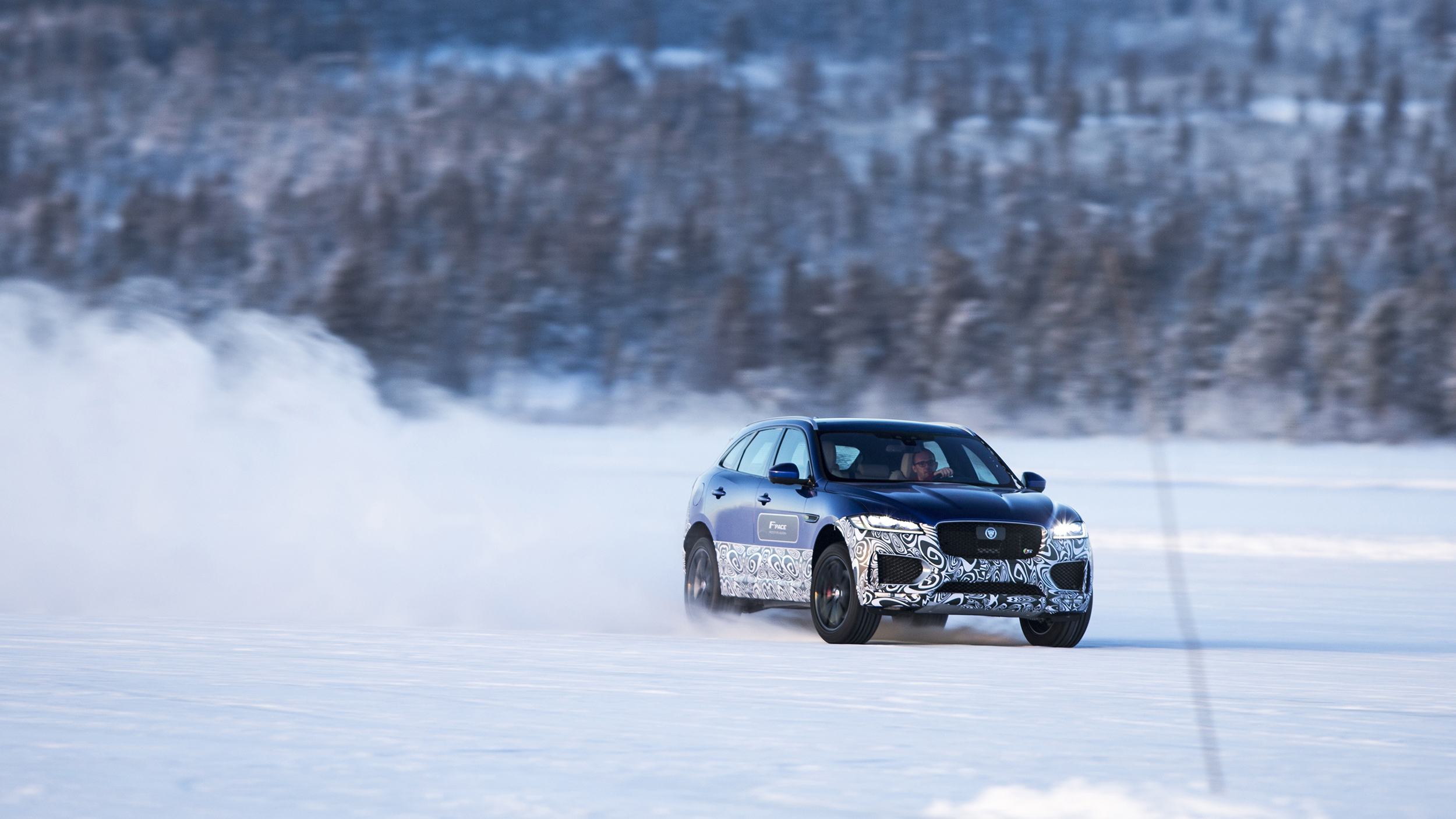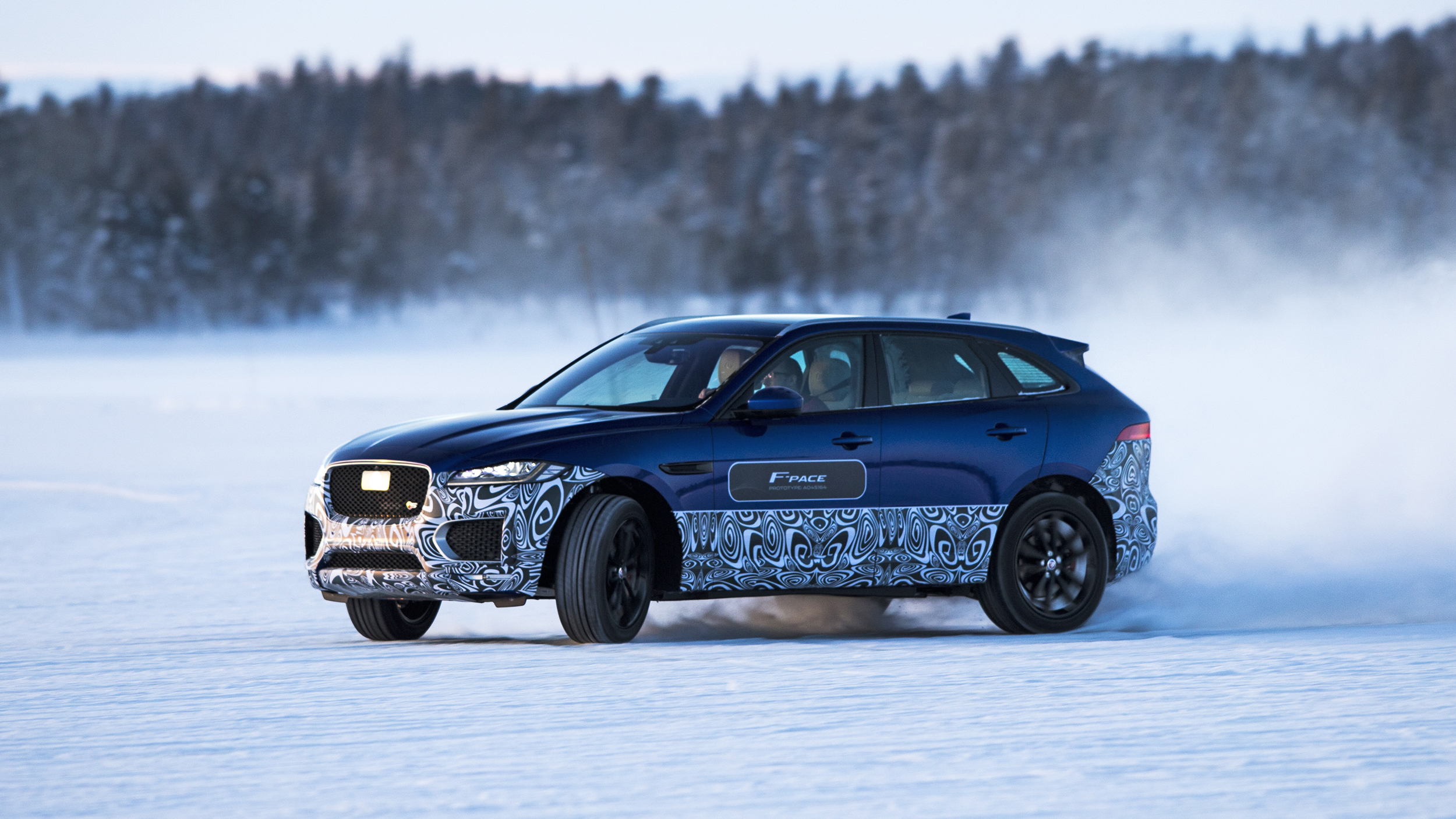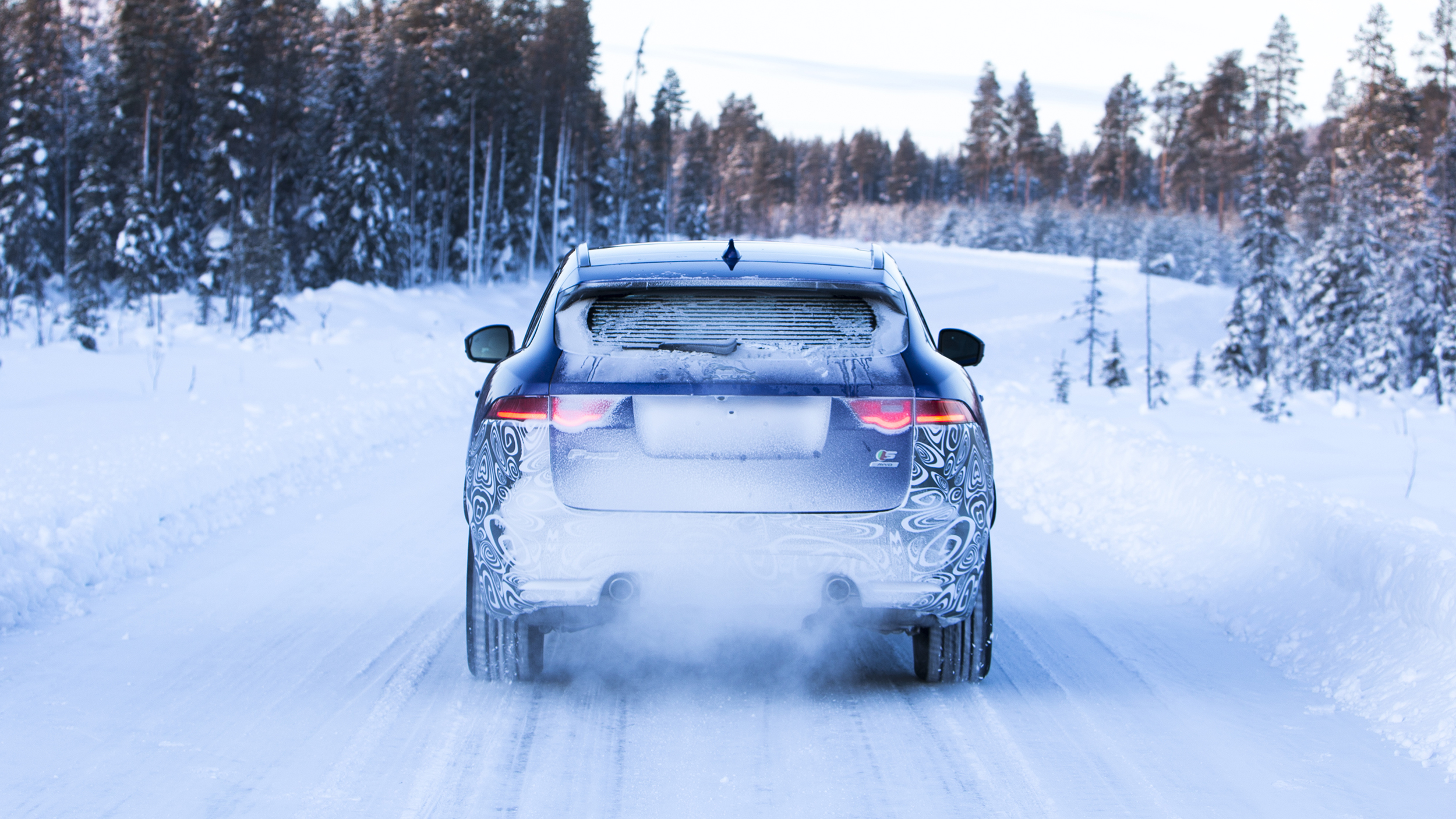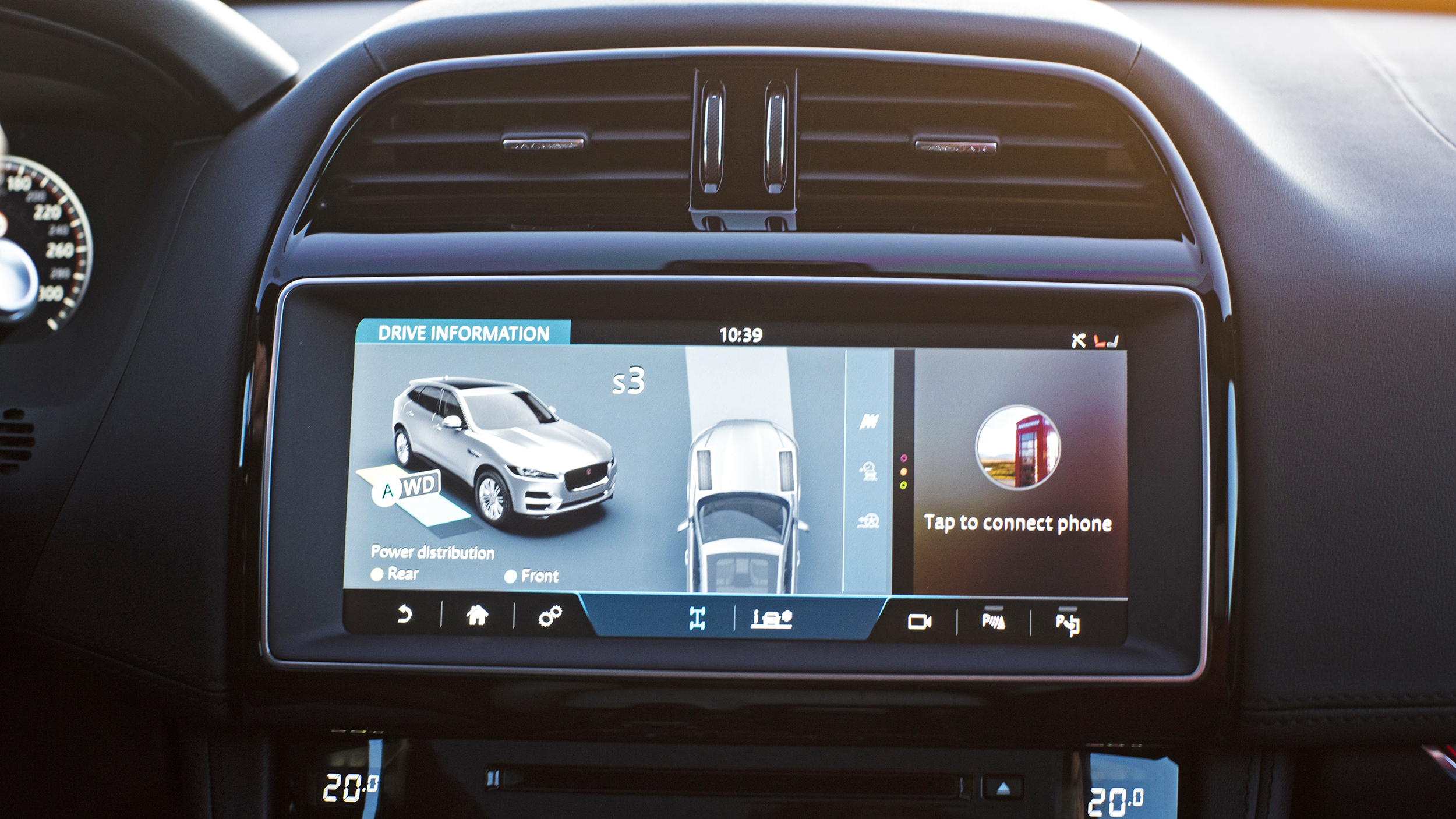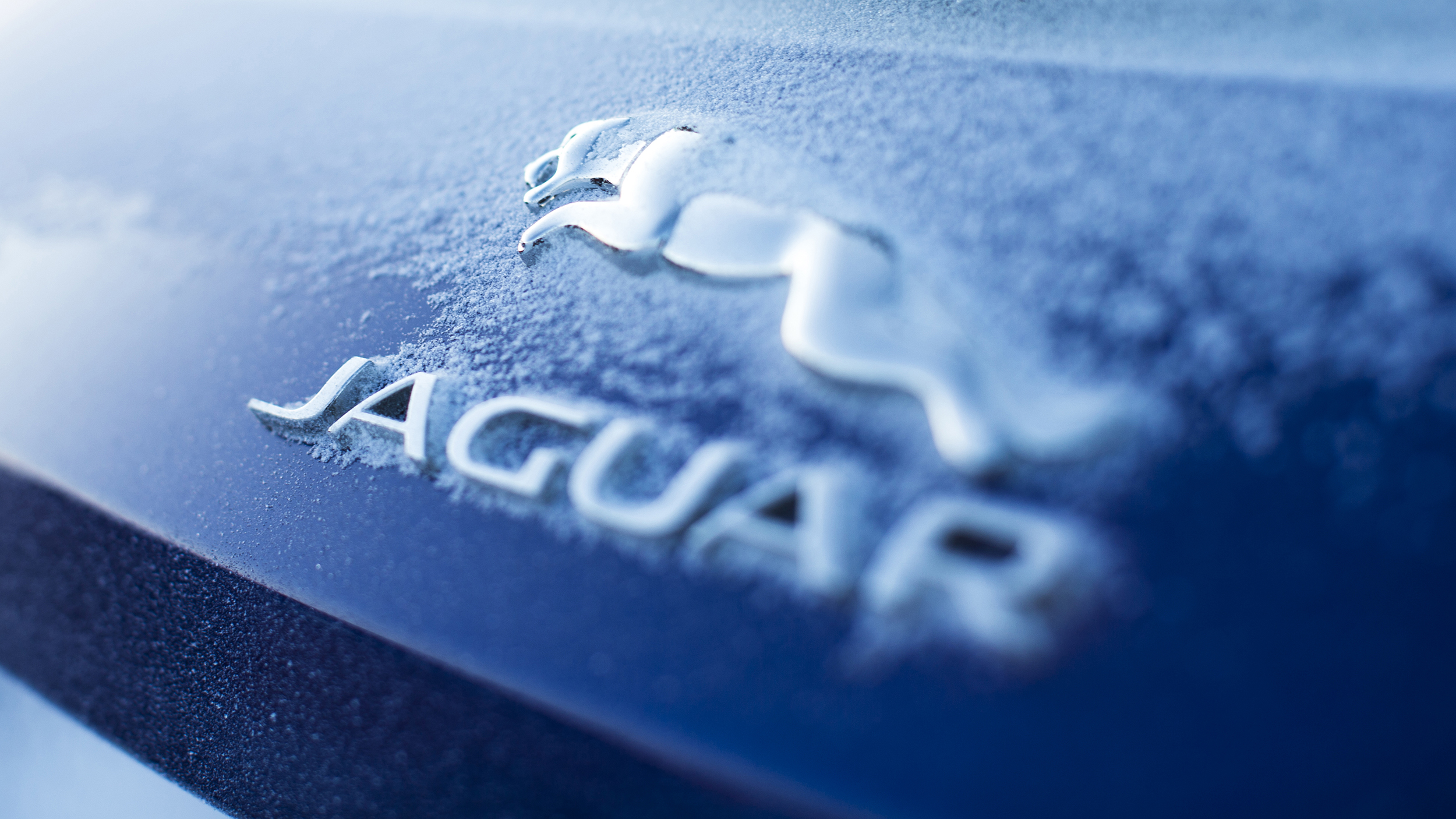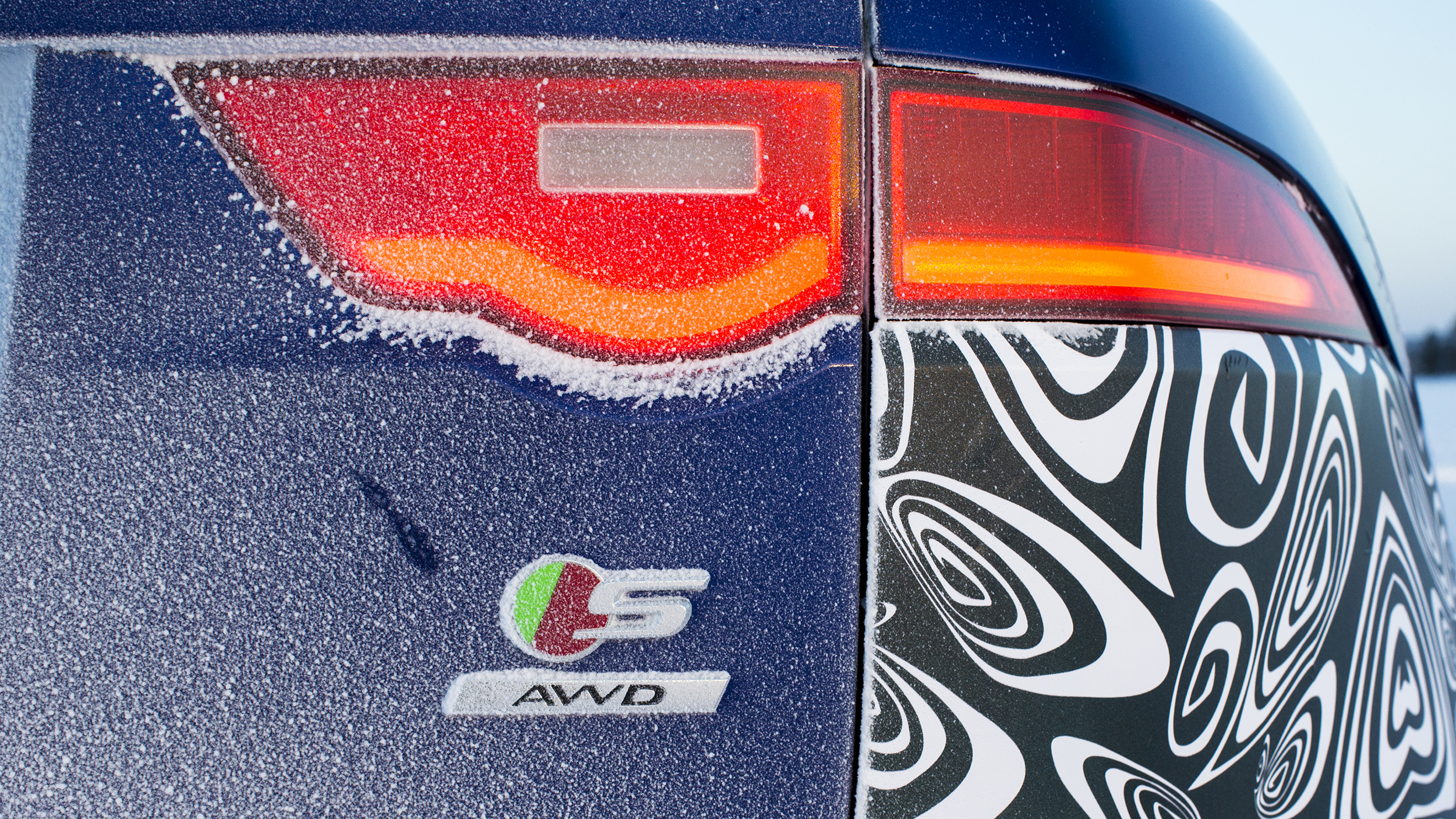
SPEC HIGHLIGHTS
- BHP
375bhp
- 0-62
5.5s
- CO2
209g/km
- Max Speed
155Mph
That looks a bit snowy.
That's because our first taste of the Jaguar F-Pace - the firm’s first production SUV - is at Jaguar Land Rover’s icy and dicey Arjeplog testing facility. Not great for assessing steering feel and ride quality, but ideal if you want to indulge in silly skids.
The AWD system in the F-Pace is set up similarly to an F-Type’s: Jag was keen to make sure it remained true to the company DNA, while it needed to go down a different path to its Land Rover relations to avoid cannibalising sales.
As a result, it’s rear-biased, especially once you’ve toggled into Dynamic and loosened (or deactivated completely) the stability control. Which on a huge snowy drift circle with hundreds of metres of run-off, you will.
So it drifts?
Yup. It’s not the most consumer-focused of testing, we confess. But it proves the system is indeed rear-biased, and that the F-Pace’s balance can in turn be rear-led. In a world away from snowy drifts, this is evidence it should be fun to drive, and that it should feel naturally balanced whether you like to slide or not.
Leave all the electronics in their safest, most sensible modes - as most owners will - and it ought to still feel agile, not bumping into its electronic nannies at the first sniff of a tight corner. We’ll know for certain once we’ve driven it on some proper tarmac, of course. That comes in the spring.
Does handling really matter to SUV buyers?
Jag would like to think so. Its SUV was born with the Audi Q5 and BMW X3 as its benchmarks. Then Porsche launched the Macan partway through development and everything was put on hold.
“This car wouldn’t be the way it is if it wasn’t for the Macan,” the F-Pace’s engineering manager, Dave Shaw, tells TG. “Porsche effectively said ‘ooh, look at what you can do’ and we paused the programme for six to eight weeks, then all agreed we had to change and have been working at it ever since.”
Top Gear
Newsletter
Thank you for subscribing to our newsletter. Look out for your regular round-up of news, reviews and offers in your inbox.
Get all the latest news, reviews and exclusives, direct to your inbox.
While the F-Pace’s practicality had to remain, the Macan was immediately the dynamic benchmark. Miles of testing have been racked up at the Nürburgring, while the two have been tested alongside each other in Lapland. Jag reckons the F-Pace is friendlier for novice drivers, and it certainly feels wieldy and easy to control. And fun.
Silly stuff over. Tell me about those systems.
F-Paces will be available with something called Adaptive Surface Response, which constantly monitors grip and adjusts the drivetrain to match the surface you’re on, be it ice, mud, sand or snow. It’s similar to systems you’ll find in its Land Rover cousins, and it all takes place in the background - the driver can’t manually adjust it. They can switch out of it and into Normal and Dynamic modes when conditions improve, though.
Also adapted from the Land Rover tech chest is All Surface Progress Control, which acts as low-speed cruise control for tricky surfaces and inclines, and as hill descent control for declines. It operates without pedal inputs.
Low-Friction Launch, meanwhile, does need the driver on the throttle, and it serves to get you off an icy driveway or assistance with hill-starts in tricky conditions, relieving the stress if you’ve a trailer behind, for instance.
Do they work?
They do. On the mixture of snow and ice at JLR’s north Sweden test centre, all three perform ably at their particular tasks, the F-Pace feeling secure and stress-free to drive in conditions that would be nasty and downright unsettling on actual roads. Over the wet grass and muddy fields that will present its most regular real-world obstacles, the F-Pace should be a breeze.
What engines can I have?
There’ll be a 178bhp 2.0-litre diesel to hoover up most of the sales, and a 296bhp 3.0-litre V6 diesel for those craving a stronger dose of performance.
Our first go was in the more niche - but ultimately more appealing - 3.0-litre V6 petrol, supercharger and all. It’s the same 375bhp unit you’ll find in the F-Type V6 S, and it retains its urgent responses and cheery exhaust bark here. But it also costs more than £50,000.
Tell me about more sensible stuff.
The car we drove was officially a prototype, but camouflage aside, you’d never tell. The fit and finish was spot on and the interior lovely. XJ aside, it’s the best cabin Jag makes, and the new, ultra-widescreen infotainment setup is clear, lovely to use and ultra fast in its responses. Jag has taken a huge step on in this area in recent years.
The F-Pace looks and feels like a big hatchback rather than a burly SUV, too. It should be easier to thread through urban jungles than a Discovery (it’s nearly 800kg lighter, after all) and it’s an incredibly taut looking thing. Word is that it the sketch came before an SUV had been touted, though the current market would have brought one along regardless, you’d think.
Indeed, this could become Jaguar’s biggest seller. There’s already a four-month waiting list and it starts at an entirely reasonable £34,170. We’ll have a far clearer picture once we’ve driven it on actual roads, but given JLR’s recent form, the omens for success look very good.
Featured

Trending this week
- Car Review
BMW 1 Series
- Top Gear's Top 9
Nine dreadful bits of 'homeware' made by carmakers




